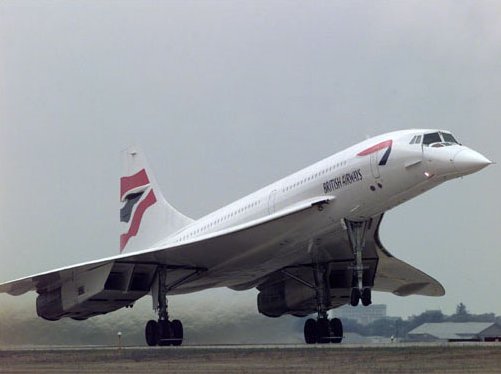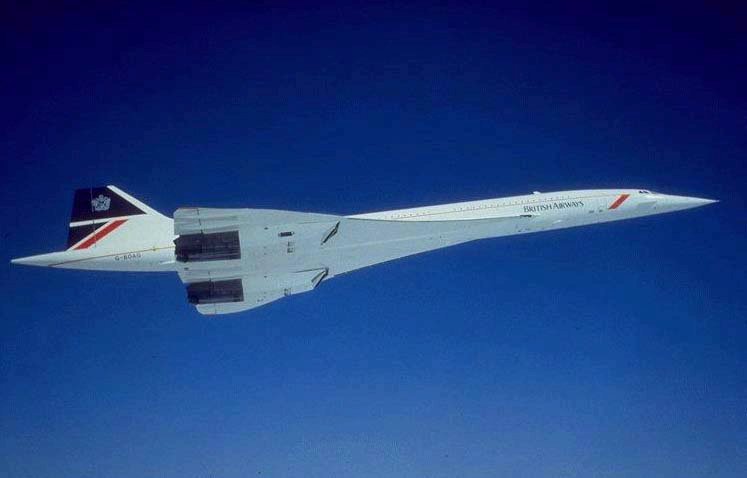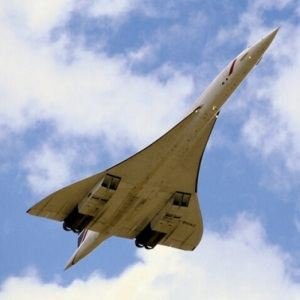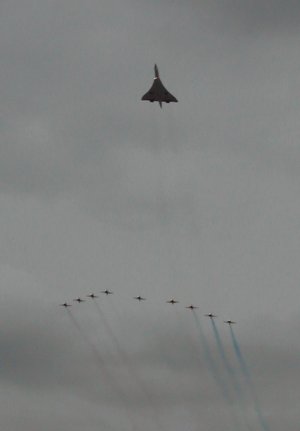
The 24th of October 2003 was the end of an era, the day supersonic passenger flight ended.
I am proud to say that
I have flown on Concorde. I flew from New York to
London on Concorde on the 6th January 1990. My flight took 3 hours and
7 minutes, exceeding mach 2 and flying at 57,500 feet.
For me Concorde is one of the most amazing and spectacular engineering accomplishments. The roar of it's engines as it flew overhead never failed to bring people in the street to a stop as they looked up to see the unique and beautiful shape. How many aircraft can claim to be beautiful?
Perhaps one day humans will produce an aircraft that matches or even exceeds the imagination of Concorde. Until then, we have all taken a step backwards, favouring 'economy' over excellence.
Some Concorde information.
In 1962, the British and French governments signed an agreement to develop a supersonic transport aircraft (SST). The plane was built jointly by British Aerospace (BAe) and Aerospatiale. Two prototypes were built, and the first flight took place in 1969. A total of 20 Concordes were made. The planes were flown by British Airways and Air France. The 30th anniversary of the Concorde took place on March 2, 1999. Ten of the Concordes have flown more than 920,000 hours.
The Concorde flies faster and higher than other commercial jets. For example, a Boeing 747 aircraft cruises at about 560 mph (Mach 0.84) at an altitude of 35,000 ft. In contrast, the Concorde cruises at 1,350 mph (Mach 2) at an altitude of 60,000 ft.
The engines on the Concorde provide the thrust necessary for takeoff, cruising and landing. The Concorde has four Rolls Royce Olympus 593 turbo jet engines. Each engine generates 18.7 tons of thrust. Together, the four engines burn 6,771 gallons of fuel per hour.
The Concorde's engines are attached directly to the underside of the wing without engine struts. This design reduces air turbulence and makes for a more stable engine. At supersonic speeds, engine struts would be overstressed and likely to break.
The Concorde's engines use afterburners to gain additional thrust to reach supersonic speeds. Afterburners mix additional fuel with the exhaust gases from the primary combustion chamber and burn it to get more thrust. Afterburners are typically used on supersonic military jets.
The Concorde has 17 fuel tanks that can hold a total of 31,569 gallons of fuel. The main tanks are located in each wing (five on each side) and fuselage (four).
The Concorde also has three auxiliary or trim fuel tanks (two in front and one in the tail).
As the Concorde reaches supersonic speeds, its aerodynamic centre of lift shifts backward. This shift drives the nose of the aircraft downward. To maintain balance, fuel is pumped backward into the trim tanks. The redistribution of fuel balances the aircraft by making its centre of gravity match the centre of lift. When the plane slows down, the centre of lift shifts forward. Fuel is then pumped forward into the trim tanks to compensate.
So, unlike other jets, the Concorde uses fuel not only for the engines, but also for aerodynamic stability.
Because the Concorde moves faster than sound, the air pressure and friction really heat up the plane. The temperature of the aircraft's skin varies from 261 degrees Fahrenheit (127 degrees Celsius) at the nose to 196 F (91 C) at the tail. The walls of the cabin are warm to the touch. To help reflect and radiate this heat, the Concorde has a high-reflectivity white paint that is about twice as reflective as the white paint on other jets.
The heat encountered by the Concorde causes the airframe to expand 7 inches (17.8 cm) in flight. To minimize the stress on the aircraft, the Concorde is made of a special aluminium alloy (AU2GN) that is lightweight and more heat-tolerant than titanium.






This photo was taken by my good friend
Chris from the balcony of
his flat, the day Concorde and the red arrows flew
over
Buckingham Palace to celebrate the Golden Jubilee of
Queen Elizabeth
the Second.
Moments like this make me truly proud to be British.